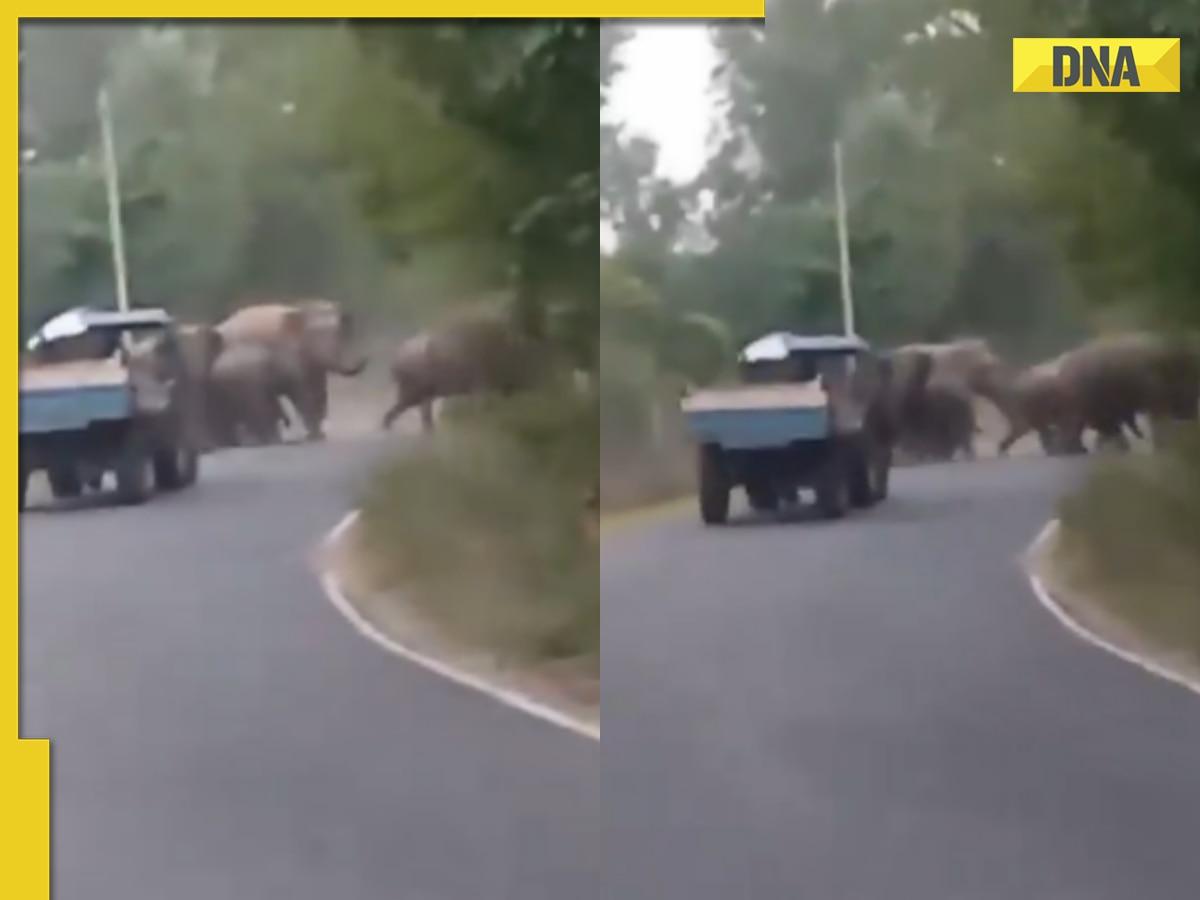
Reckless driving poses a significant threat not only to humans but also to wildlife, as vividly illustrated in a recent video shared by Indian Forest Service officer Parveen Kaswan. The footage, which has quickly gained traction on social media, shows a tractor barreling towards a herd of elephants crossing a jungle road. The distressing scene depicts a few elephants charging at the vehicle in self-defense, underscoring the perilous situation caused by the driver’s actions.
Kaswan accompanied the video with a poignant message, challenging viewers to identify the “real animals” in the footage. His caption read, “Identify animals in the video! Video is said from Jharkhand. Remember animals have first right of way in the jungle.” This statement underscores the driver’s reckless behavior, which not only endangered the elephants but also displayed a flagrant disregard for wildlife.
The video has incited widespread outrage among viewers, who were quick to condemn the driver’s conduct. Many highlighted that such behavior is not only dangerous but also illegal, emphasizing that wildlife has the right of way in forest areas.
Twitter users were vocal in their reactions:
“Can the administration identify the tractor driver and prosecute for disorderly conduct and intent to cause harm to wildlife?” one user wrote.
“This made me angry,” shared another.
“While driving through a forest, remember that you are trespassing in the animals’ property, not the other way around!” posted a third.
“Ye video me janwar to muje insan lag rahe hai,” commented a fourth, translating to “In this video, the animals seem to be the humans to me.”
The incident serves as a stark reminder of the importance of respecting wildlife and adhering to safety regulations in forested areas to prevent such dangerous encounters.
Going beyond just the video, it is crucial to note that the implications of such careless actions are profound and far-reaching. The habitats of elephants and other wildlife are increasingly threatened by human activities, such as deforestation and rapid urbanization. When these creatures venture into areas now dominated by humans, it is imperative that drivers and other individuals exercise caution and understand the importance of coexisting with wildlife.
The elephant herd depicted in the video was merely going about its natural migratory pattern when faced with the unexpected disturbance caused by the fast-approaching tractor. Their defensive reaction speaks volumes about the primal need for survival and the inherent danger that human activities pose to wildlife.
. A question arises here: what measures are being taken to protect these gentle giants from such threats?
The Forest Department and local administration must take stringent actions against individuals who exhibit such reckless behavior. Implementing stricter penalties and educational programs about the importance of wildlife conservation could be a step in the right direction. Furthermore, setting up speed limits and installing warning signs in forested areas frequented by animals could prevent future mishaps.
The video shared by Kaswan underscores not just a singular act of recklessness but also a broader, more systemic issue that calls for public attention and action. Activists and conservationists have continually warned of the dangers posed to wildlife in human-dominated landscapes. This incident is an alarming example of the real-world consequences of disregarding those warnings.
In recent years, there have been several reported incidents where wildlife has come into conflict with human activities, often resulting in tragic outcomes for the animals involved. Such incidents highlight the need for better protected and managed wildlife corridors that allow safe passage for animals traversing through their natural habitats.
Moreover, this video opens up a dialogue about the ethical responsibilities humans have towards wildlife. Education can play a crucial role in shaping attitudes and behaviors towards animals. Schools and communities should introduce programs that teach respect for wildlife and the environment from a young age.
Taking a community-based approach can also yield positive results. Involving local residents in wildlife protection initiatives and creating awareness about the significance of biodiversity can help build a more harmonious relationship between humans and wildlife.
As the nation grapples with this latest incident of human-wildlife conflict, it’s crucial that the outrage generated turns into meaningful change. Policies should be enforced more rigorously to ensure such dangerous encounters are minimized. This change can’t come soon enough for the many species teetering on the edge of survival in the face of human encroachment.
In summary, the viral video highlighting the dangerous encounter between a speeding tractor and a herd of elephants serves as a potent reminder of the pressing need to respect wildlife and adhere to safety measures in forested areas. It calls for prompt corrective actions and long-term strategies to foster coexistence between humans and wildlife, ensuring the safety and preservation of our precious natural world.












